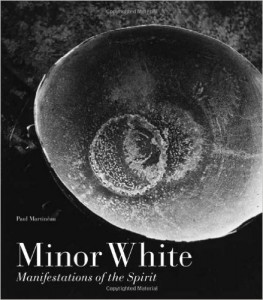 Minor White: Manifestations of the Spirit
Minor White: Manifestations of the Spirit
by Paul Martineau
Getty Publications
200 pages, $39.95
THE HUMAN NAVEL has historically symbolized the evolutionary past, through millennia cross-culturally, and for all ethnicities. The navel represents the universal maternal connection embodied in 6th-century Persian silver shallow drinking bowls with a bulbous bellybutton indentation; in a rosette of lotus petals radiating from the Hindu god Vishnu’s navel; or, in Greek mythology, in the conical-stone omphalos (the Greek word for navel) at the Sanctuary of Apollo on Mount Parnassus, designating the earth’s center. The navel also symbolizes the unknown and mysterious. When Freud conceded that not all dreams were interpretable—some contained an inextricable knot—he labeled this predicament a “navel.” The Belly-Button Biodiversity Project studies the navel as the gateway for a microbial ecosystem: for years the bellybuttons of hundreds of participants have been cotton-swabbed so the bacteria found there can be analyzed. Surprisingly, many specimens have revealed microorganisms found only in marine environments or in foreign soils. The navel can arouse pleasurable unpredictability. Madonna, whose navel is pierced with a gold ring from which dangles a diamond horseshoe charm, exclaimed: “When I stick my finger in my belly button, I feel a nerve in the center of my body shoot up my spine.”






